November 10th, 2009 admin
And here are details of another book about the English being penned by author, broadcaster and journalist Cole Moreton, which is due to be published next Spring. It’s called ‘Is God Still an Englishmen – How we lost our faith (but found new soul)’.
Moreton has a website and blog for the book, which you can read here.

And here’s his blurb-
“Who are we? What do we believe in? Where are we going?
Those questions used to be easy to answer, but there has been a revolution. The God who ruled over us for five hundred years has been overthrown. The soul of England has been transformed, almost without anybody noticing. Gone are the shared values that once made school children rise and sing ‘All Things Bright and Beautiful’. Gone is the confidence of a nation that seemed so sure of itself and what it believed in, even as recently as the wedding of Charles and Diana, our last great festival of certainty.
Since then the number of people who go to church on Sunday has halved. More of us go to IKEA. Millions still believe in God but never want to go near a pew again. We have completely lost faith in the Christianity on which our nation was built, the religion – so bound up with class and power – that shaped our myths and legends, our laws and government, our language, literature, art and culture. Why have we turned away, and what does it mean?
The long-predicted death of the established Church has already happened, argues Moreton, himself a former teenage fundamentalist. He uncovers the battles, blunders, sex scandals and financial disasters that caused it. But this extraordinary story is about all of us, not just the Christians. Can a new national identity emerge, now that we have a thousand gods instead of just one? Moreton says yes. From the miners’ strike to the climate camp, and from Hillsborough to the funeral of Jade Goody, he reveals how a constantly evolving but uniquely English spirituality remains at the heart of who we are.”
Posted in OTHER STUDIES | Comments Off on IS GOD STILL AN ENGLISHMAN?
Here’s the publisher blurb- “Passionate, affectionate and indefatigably curious, In Search of England joins a tradition of writing, from William Cobbett to JB Priestley, that makes a journey around the English countryside and character. England is the most various of countries; within its borders, life changes mile on mile. Roy Hattersley celebrates crumbling churches and serene Victorian architecture, magnificent hills and wind-whipped coast, our music, theatre and local customs, and, above all, the quirky good humour and resilience of England’s denizens. In Search of England is an unapologetic love story, a paean of praise for all the fascinating variety and flavour of England’s places and people.”
Posted in OTHER STUDIES | Comments Off on IN SEARCH OF ENGLAND
It was an early start this morning, thanks to the kids having not yet adjusted to the clocks going back an hour on Sunday, and I found myself listening to the Shipping Forecast – the intangible and mysterious weather forecast that is broadcast daily for shipping – at 05.20am on Radio 4! And it brought to mind the wonderful series of photographs on the subject by Magnum photographer (and fellow Brighton resident) Mark Power.
Although Power is better known for his large-format colour work such as Superstructure, a documentation of the construction of London’s Millennium Dome in 2000; The Treasury Project, about the restoration of a nineteenth-century historical monument, in 2002: and 26 Different Endings (2007) which looks at those landscapes unlucky enough to fall just off the edge of the London A-Z, one of his most poetic bodies of work is The Shipping Forecast (Zelda Cheatle Press, 1996), which was made in response to the esoteric language of these daily maritime weather reports.
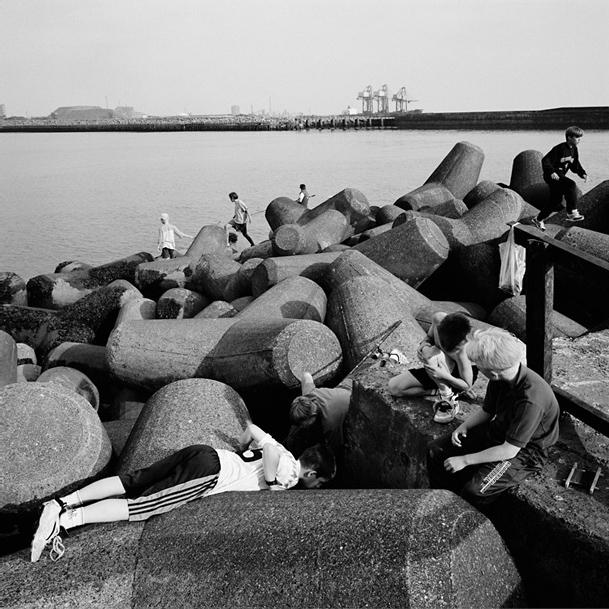
LUNDY. Tuesday 19 July 1994. Variable becoming westerly 2 or 3. Mainly fair. Moderate or good. © Mark Power, Magnum.
For those at, or about to put to sea, the forecast may mean the difference between life and death. But for millions of landlubbing radio listeners it is more than this; the enigmatic language of the forecast has entered the public conciousness, creating a landscape of the imagination and confirming romantic notions of Britain’s island status. In the work Power documents the 31 sea areas covered by the forecast, which include, among others, Finisterre off the north Portuguese/western Spanish coast, Biscay off the north Spanish/western French coast, the Irish Sea, and southeast Iceland.
Here are some more of Powers’ photographs from the series, all of which you can find on his website here.
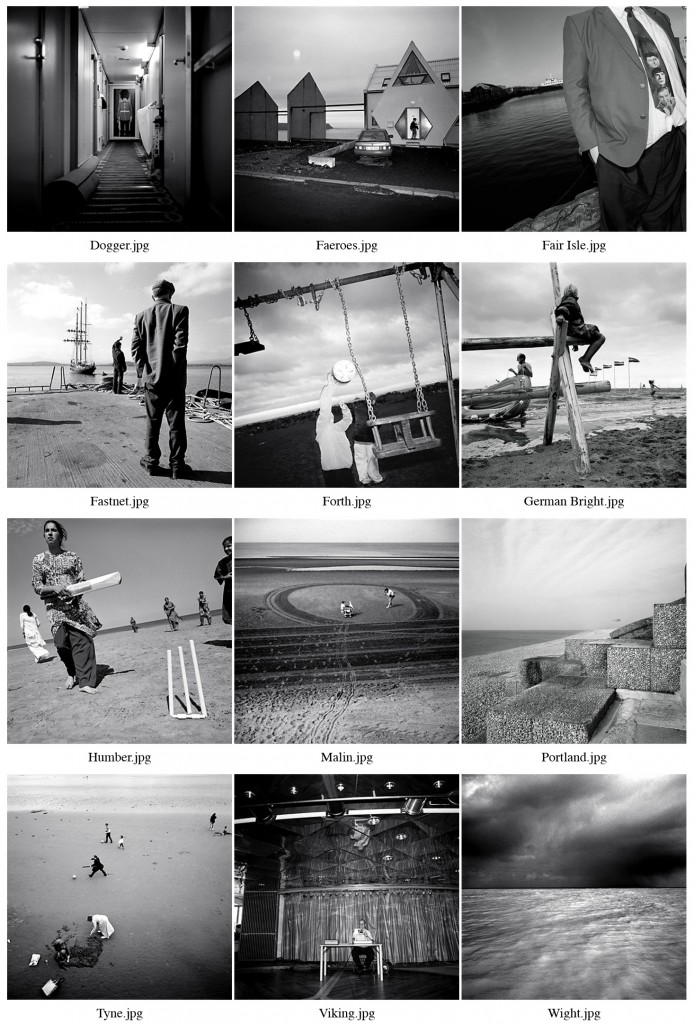
Captions-
MALIN
Monday 6 September 1993. Southeast backing easterly 4 or 5, increasing 6 in the south. Mainly fair. Moderate or good.
WIGHT
Saturday 18 February 1995. Northwesterly backing southwesterly 6 or 7, increasing gale 8 for a time. Showers then rain. Good becoming moderate or poor.
FASTNET
Monday 10 April 1995. Southwesterly 3 or 4. Moderate or good.
VIKING
Tuesday 25 July 1995. Southerly 3 increaing 5 or 6. Fair. Good.
FAIR ISLE
Sunday 28 January 1996. Southeasterly 4 or 5, occasionaly 6 in southwest at first. Mainly fair. Good.
TYNE
Sunday 25 July 1993. West or southwest 3 or 4 increasing 5 or 6. Showers. Good.
HUMBER
Saturday 13 July 1996. Southwesterly veering northwesterly 4 or 5. Occasional drizzle. Moderate with fog patches.
DOGGER
Sunday 30 June 1996. West or southwest 4 or 5, occasionally 6 later. Occasional rain. Mainly good.
GERMAN BIGHT
Saturday 26 August 1995. Northwesterly 5 or 6, occasionally 7 at first. Showers. Moderate or good.
FAEROES
Tuesday 6 August 1996. Mainly southerly 3 or 4. Occasional rain. Moderate or good.
FORTH
Saturday 17 December 1994. Southerly 6 to gale 8. Rain at times. Moderate or good.
PORTLAND
Tuesday 23 November 1993. Southeasterly 4, increasing 5 to 7. Showers. Moderate or good.
You can buy a first edition of the book for £250.00 or a third edition for £40.00 on Power’s website here and read a number of essays on Power’s work here.
I’m excited about a new project that Power is working on in England. Destroying the Laboratory for the Sake of the Experiment is a speculative mix of photographs by Power along with poems by Daniel Cockrill.

Each month, time permitting, the pair spend a few days in a different part of England, responding in pictures and words to shared experiences in a country they both love and loathe. Expected to continue until 2010, their work will be presented here as ‘work-in-progress’ on loops of different lengths, encouraging random juxtapositions to occur. The series will be added to periodically.
You can watch a slideshow of photographs set to a poem read by Cockrill here.
Posted in OTHER STUDIES | 2 Comments »
The Edge of England is a series of black & white photographs by Alexander Brattell made in the Hastings and Rother area of southern England between 2006-2009. An exhibition of the work is due to open at McCarrons of Mercatoria on 31st October. Read more here.

31 October – 5 December 2009
McCarrons of Mercatoria
68 Norman Rd, St Leonards On Sea, East Sussex TN38 0EJ
Tuesday-Saturday, 10am-5pm
Posted in OTHER STUDIES | Comments Off on THE EDGE OF ENGLAND
Although I only looked at the UK Magnum photographers who’ve documented England, of course many of the co-operatives’ photographers have made some fantastic work here. There are too many to post up- just do a search for England on Magnum’s website. However, I couldn’t resist posting up a couple of images taken by the main man himself, Frenchman Henri Cartier-Bresson, during the coronation of King George VI in London on 12 May 1937.
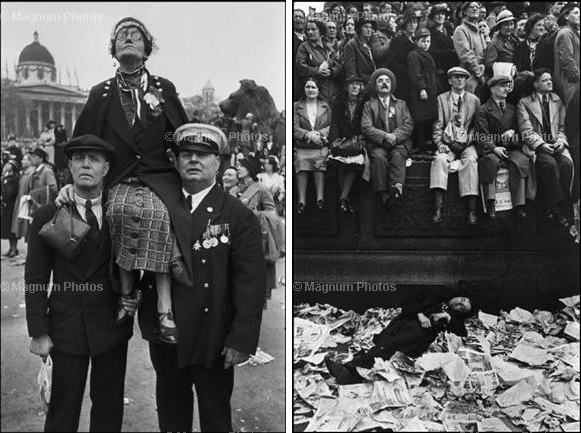
©Henri Cartier-Bresson/ Magnum Photos
Posted in OTHER STUDIES | Comments Off on BRESSON’S ENGLAND
On the subject of Magnum, I’ve just received an invitation to Martin Parr’s new exhibition
Parrworld opening at the BALTIC gallery in Gateshead this week. The exhibition originated at
the Haus der Kunst in Munich and is coming from the Jeu de Paume in Paris.
MARTIN PARR
16 October – 17 January 2010
PARRWORLD
The show will be presented over two floors; the first containing photographs from his new book, Luxury (Chris Boot, October 2009). The second floor housing a range of objects from Parr’s years of collecting and hording. Also presented are just over a 100 prints from his personal photographic collection presented in British and international sections.
Parr has one of the biggest private collections in England, where social documentary photography is found alongside works from the 1970s and 80s by Tony Ray-Jones, Chris Killip and Graham Smith. Artists such as Keith Arnatt, Mark Neville, Jem Southam and Tom Wood represent contemporary British photography.
The international section features images that have influenced Parr or with which he feels a strong personal connection, ranging from photographs by masters such as Robert Frank, Garry Winogrand and William Eggleston, to pictures by friends like John Gossage and Gilles Peress, as well as work by Japanese photographers, including Osamu Kanemura, Kohei Yoshiyuki and Rinko Kawauchi.
You may be intrigued to know that Parr has also acquired a selection of We English prints, two of which – ‘Mad Maldon Mud Race’ and ‘Holy Island of Lindisfarne’ – are included in the exhibition.
The gallery is also presenting Damien Hirst’s 1992 work Pharmacy until 7 February 2010.
Posted in OTHER STUDIES | 1 Comment »
Magnum photographer Chris Steele-Perkins is launching his new book on England, at the Kings Place Gallery on October 8th. England, My England (Northumbria Press) brings together images taken in the country by Steele-Perkins over the past 40 years.
Here’s the blurb- “In his new book, Chris presents a sweeping, unique record of what he thinks makes England truly English. From Sunday cricket matches to snoozes in a deckchair; intimate family portraits to carefree children at play; circus shows with performing bears to the wilder performers of a street carnival; and from Saturday night dancing to race riots. Each picture tells a story of time and place and many of the images collected will strike a chord or a memory in the viewer. These natural and authentic photographs are a personal selection of the best and most important of Chris’s images that he has taken over 40 years of photographing in England.”
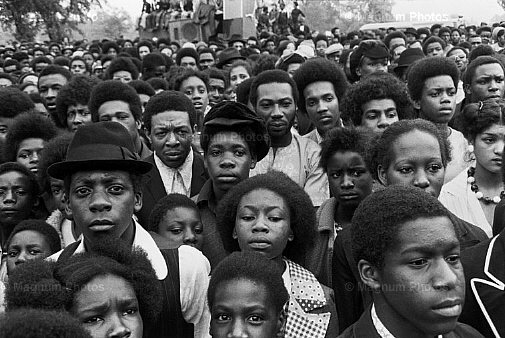
Reggae Festival, London 1974 from England, My England © Chris Steele-Perkins/ Magnum Photos
Over the years England has proved a rich landscape for many of the photographers in the Magnum collective, and continues to inspire (both Martin Parr and Mark Power are currently working on new projects here), as a result I’ve decided to give a quick tour through some of these photographic studies.
I’ve already discussed the work of a few of the Magnum photographers on the blog including Chris Steele-Perkins (here), Martin Parr (here) and Ian Berry (here):

Whitby, 1974 from The English © Ian Berry/ Magnum Photos
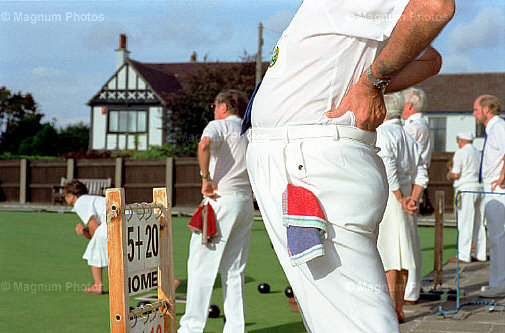 Bristol, 1995-1999 from Think of England © Martin Parr/ Magnum Photos
Bristol, 1995-1999 from Think of England © Martin Parr/ Magnum Photos
Other notable projects include:
George Rodger, one of the Magnum founders, who produced a seminal series of photographs on the blitz during World War II. The Blitz is a unique record of life in England during the autumn of 1940 as well as a moving tribute to the courage and humor of men, woman and children during one of the darkest periods of 20th century English history.
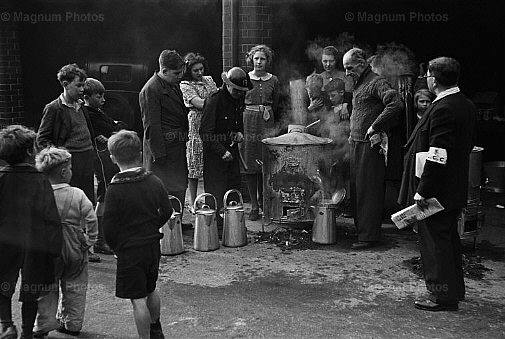 Canteen in public shelter, London 1940 © George Rodger/ Magnum Photos
Canteen in public shelter, London 1940 © George Rodger/ Magnum Photos
Eve Arnold photographed extensively in England, and many of the photographs appear in her book In Retrospect (Alfred A. Knopf, 1997) including this wonderful image of Queen Elizabeth II on tour in the Midlands in 1968.
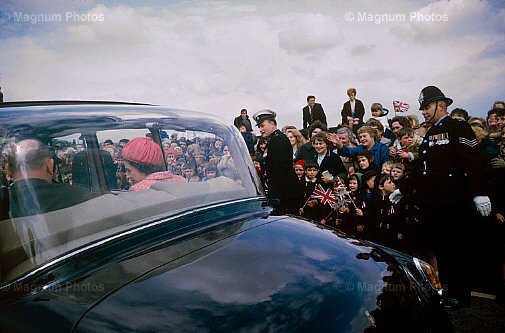
Queens Elizabeth II, The Midlands, 1968 © Eve Arnold/ Magnum Photos
Although better known for his photographs in his homeland of Wales, Land of My Father (Thames & Hudson, 2000), David Hurn undertook several assignments in England, and documented the famous Isle of Wight festivals in 1969 and 1970.
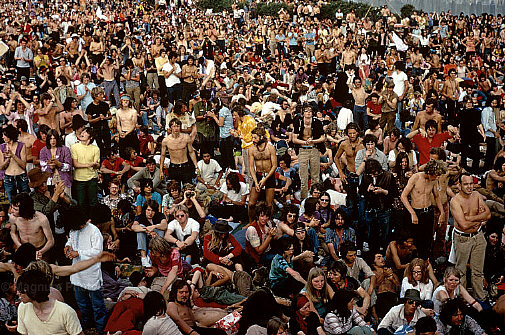 Revelers at the Isle of Wight Festival, 1969 © David Hurn/ Magnum Photos
Revelers at the Isle of Wight Festival, 1969 © David Hurn/ Magnum Photos
In the mid-1970s Philip Jones Griffiths worked extensively in Middlesbrough in Northern England. Philip recently completed a new book of his lesser known studies of British life – including those from Middlesbrough – shot during the 1950s, 60s and 70s. Recollections (Trolley, 2008) was published just before his death in early 2008.
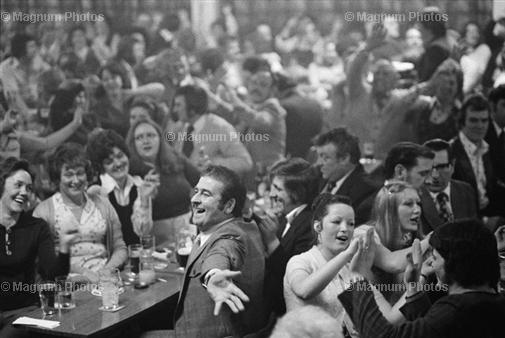
Working men’s club, Middlesbrough, 1976 © Philip Jones Griffiths/ Magnum Photos
On assignment in Liverpool in the early eighties, photojournalist Peter Marlow bore witness to the enormity of the devastation afflicting inner cities. Marlow photographed a city in decline, isolated like an island surrounded by the dreams of a Thatcherite nation. Liverpool Looking Out to Sea (Jonathan Cape, 1993) forms one of the fiercest social documents of an inner city in Britain, and became one of the strongest indictments of an era.
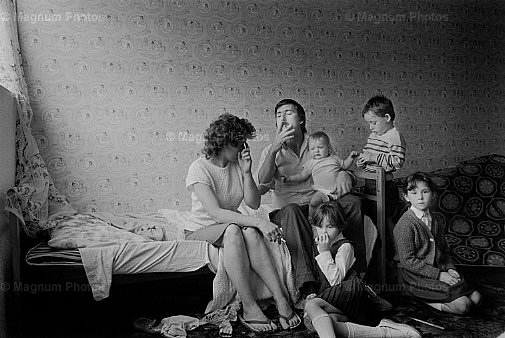 Unemployed Tony and Marie in their children’s bedroom, Liverpool, 1985 © Peter Marlow/ Magnum Photos
Unemployed Tony and Marie in their children’s bedroom, Liverpool, 1985 © Peter Marlow/ Magnum Photos
In 1996, the young Donovan Wylie and new Magnum recruit produced a series called Working England.
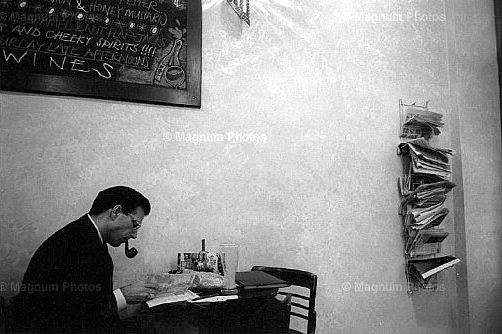 Worker in Leeds City centre cafe, 1996 © Donovan Wylie/ Magnum Photos
Worker in Leeds City centre cafe, 1996 © Donovan Wylie/ Magnum Photos
More recently, Mark Power published a book called 26 Different Endings (Photoworks, 2007), which documented the outer limits of London as defined by the A to Z road atlas.
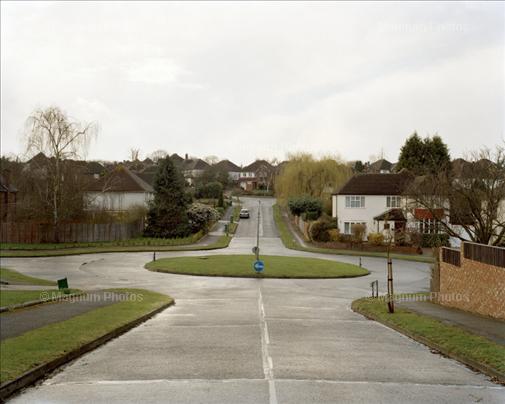
London south of page 148, A to Z, 2004 © Mark Power/ Magnum Photos
And I’ll finish with the work of Stuart Franklin and this photograph taken during the Queen Elizabeth II’s Golden Jubilee celebration in 2002. Why? Because as a young snapper on assignment for The Sunday Times Magazine, I was stood next to him when he took it!
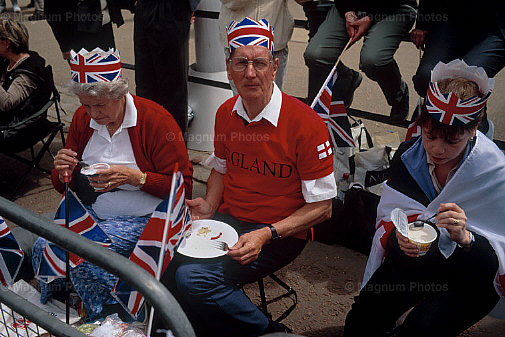
Spectators at Queen Elizabeth II’s Golden Jubilee celebration, London 2002 © Stuart Franklin/ Magnum PHotos
Posted in OTHER STUDIES | 1 Comment »
I just received an invitation from photographer Peter Dench this afternoon with details of an intriguing new project he’s workig on called ‘Carry on England’ (a play on the Carry On films – a long-running series of low-budget British comedy films).
The series will be shown as an evening projection at the Visa Pour L’image festival in Perpignan. Produced in association with Stern Magazine the work features, in his words:
“The bald, the old, the military obsessed, the posh, the poor, overweight & infirm. And introducing – asbo kids”
And if the photographs he enclosed with the invitation are anything to go by, they are taken with his inimitable style and dry humour-

© Peter Dench/ from Carry On England

© Peter Dench/ from Carry On England
The screening will taken place on Tuesday 1st September 2009 at 9.45pm in Campo Santo.
His work is well worth a look, particularly his drinkUK project, which you can see on his website. Here are a couple of photographs to wet (pardon the pun) your appetite-

 
© Peter Dench/ from drinkUK

© Peter Dench/ from drinkUK
If any of you see the screening, do report back on the work. I’d be interested to find out more.
Posted in OTHER STUDIES | 1 Comment »
As Peter Walker writes in a recent article in The Guardian, the word staycation – a predicted mass shift by recession-hit Britons towards domestic holidays – has slipped inexorably into the modern tourist lexicon in just a matter of months. And if you believe all the media reports on this phenomenon, a combination of the recession and the feeble pound will see/have seen millions of families abandoning their villa on the Algarve for a cost-conscious domestic alternative.
According to a recent survey by Mintel, some 35% of Britons said the economic climate had stopped them from booking a main holiday in the next six months, despite the fact that such a break has increasingly become seen as a right rather than a privilege throughout the recent era of cheap, easily accessible overseas travel. As a result domestic holiday centers such as Butlins – that veritable English institution – are enjoying a revival.
Butlins, the nation’s favourite cheap and cheerful holiday resort may have battled with an image problem in the past but new investment is hoping to put it firmly on the pampering map! The company’s PR department has obviously been in overdrive recently with articles on their new £20 million Ocean Hotel in Bognor Regis (the South Coast resort that famously caused George V to exclaim ‘Bugger Bognor!’ when told by his doctors to convalesce there) featuring in most of the national newspapers. Take this report in the Daily Mail for instance.
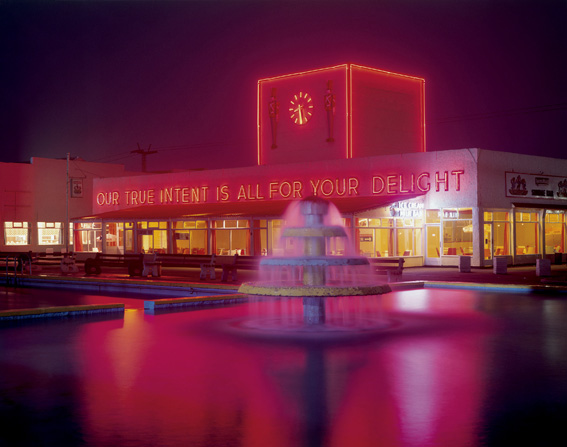
© John Hinde Ltd/ Chris Boot Ltd
The first holiday camps in the UK were the masterplan of entrepreneur William ‘Billy’ Butlin, who had seen some lakeside holiday centres during a visit to Canada during World War I and realised that they were something that could easily be introduced to his native Britain. Butlin selected the seaside town of Skegness, Lincolnshire, for the location of his first holiday camp, which was opened on 11 April, 1936. The story goes that he first spotted what became the company slogan – “Our true intent is all for your delight” – emblazoned on a fairground organ, little knowing that it was a line from A Midsummer Night’s Dream.
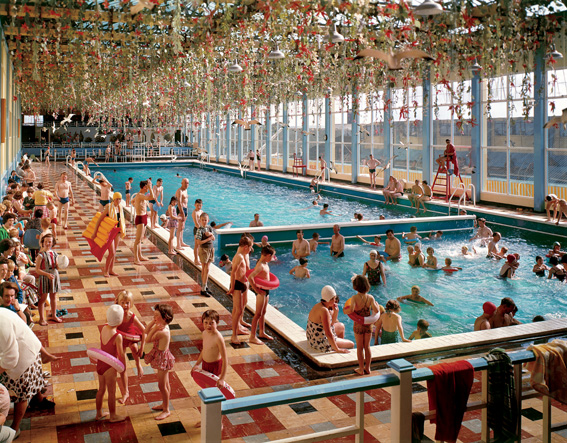
© John Hinde Ltd/ Chris Boot Ltd
Stephen McClarence charts the background to Butlins in an article in the Telegraph here. McClarence writes “Butlin, a canny South African-born fairground man who started out with a single hoopla stall, realised that the unreliable British climate left holidaymakers with a problem – what to do when it rained. Reputedly fed up with trudging around a monsoon-lashed seaside resort in search of shelter and amusement, he came up with the idea of a holiday village with all-inclusive accommodation, meals and entertainment. And plenty of roofs. The appeal was simple. From dawn (signalled by a cheery “Good morning, campers!†over the tannoy), to dusk, there was no need to organise anything for yourself. It was all there on site and on tap: ballrooms, theatres, golf courses, swimming pools – brimming, if Forties posters can be believed, with sleek, chic young people with dazzling smiles. Vast dining rooms served meals on an industrial scale. It was all ‘Biggest… Brightest… Best’ and its heyday was the Sixties, with two million overnight guests a year.”
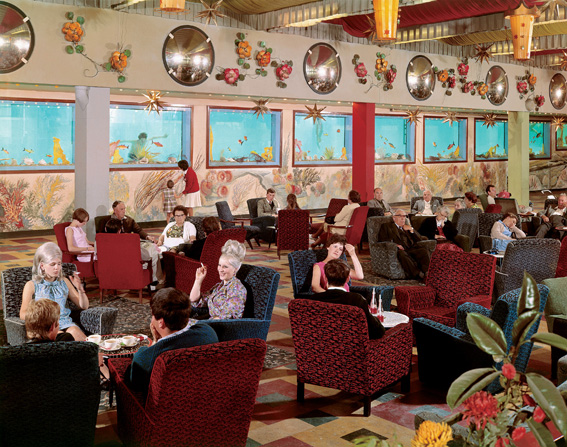
© John Hinde Ltd/ Chris Boot Ltd
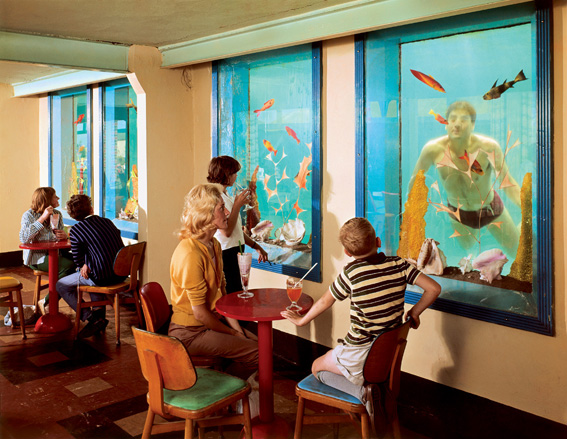 © John Hinde Ltd/ Chris Boot Ltd
© John Hinde Ltd/ Chris Boot Ltd
In the 1960s, Billy Butlin commissioned colour photography maestro John Hinde to immortalise his empire. The results spawned the tradition of the lurid, hyper-real postcard. Each photograph was stringently composed by Hinde and his team, and the colour saturation doctored to render everything in unnatural Technicolor. It was the job of two German photographers (Elmar Ludwig and Edmund Nagele) and one British (David Noble) to execute the photographs to Hinde’s rigorous formula. At the time, the results were deliberately populist adverts, but as Holly Kyte writes in The First Post, “now these delightfully artificial social documents have, unintentionally, become art instead.”
The postcards were brought together in a wonderful book edited by Martin Parr and published by Chris Boot. Our True Intent is all for Your Delight was published in 2005.
“Long viewed only as a master of kitsch Hinde is now recognised, albeit posthumously, as a peerless social documentarian. Dazzling in their their colour intensity and strange clarity…. Visionary, Wonderful.” Sean O’Hagan, The Observer, London
“Extraordinary…the combination of aesthetics and promotion produced something that bypasses documentary and approaches an arresting British surrealism.” David Jays, Financial Times
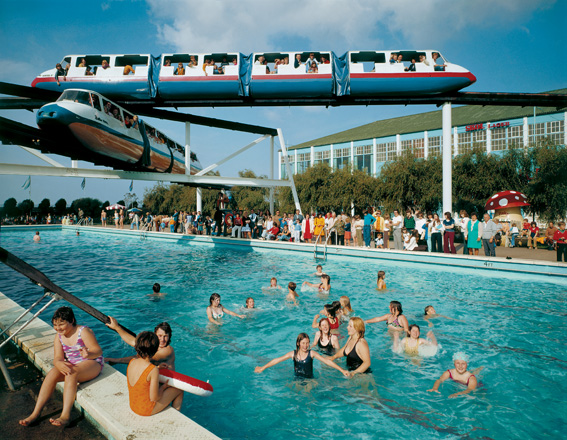
© John Hinde Ltd/ Chris Boot Ltd
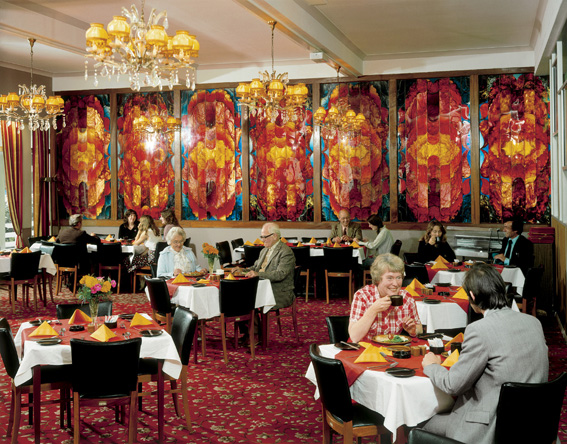
© John Hinde Ltd/ Chris Boot Ltd
It’s interesting to note that the postcards had an impact on the young Martin Parr, who worked over two summers at Butlin’s in the early 1970s and introduces the images for this book. You can see how the photographs has had a lasting impact on his own photographic aesthetic – Martin Parr’s portfolio on Magnum website.
More than 10 million British holidaymakers have stayed at Butlins since then, and though modernised versions of the camps still exist, their glory days have long been over (que the new Ocean Hotel resort).
There is an article on the John Hinde postcards written by Michael Collins in The Telegraph here.
You can read a potted history of the Butlins resorts on the BBC website here.
And here is a slideshow of photos from Butlins resorts in their heydey.
Posted in OTHER STUDIES | 6 Comments »
The Glorious Twelfth is usually used to refer to August 12, the start of the shooting season for Red Grouse and this time last year I was traipsing around the North Yorkshire Moors in the pouring rain photographing one such shoot (see my blog posts here and here).
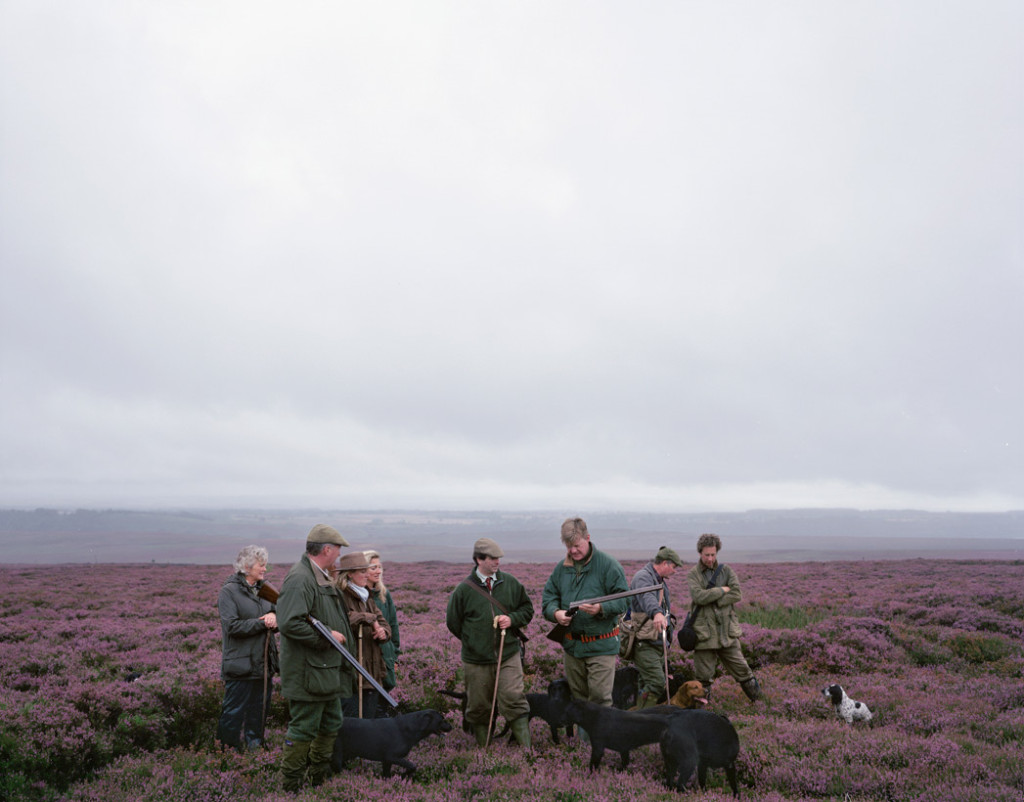
Grouse Shoot, Hutton-le-Hole, August 18th 2008 © Simon Roberts
After several very poor seasons due to outbreaks of disease-carrying parasites and unsuitable weather, grouse moors are reporting a surge in bird numbers this season. Moor owners believe it may be the best for a decade. And according to a recent article in the FT, this expensive past time has got even more so. Shoot owners say prices for the most select grouse shooting in northern England and Scotland have risen to £160 a brace, or pair of birds, compared with £140 last year, so the typical party of nine shooters could face a bill as high as £64,000, before taxes, for a bumper day.
While I didn’t get much on my wet outing in Hutton-le-Hole it does bring to mind the work of photographer Tessa Bunney who produced an excellent series of images called ‘Moor and Dale’ which documented the Nidderdale Area of Outstanding Natural Beauty between 2001-3 in the North Yorkshire moorland.
Mapped out by three rivers and defined by grouse moorland, heather covered bog and dry heath, this is ‘a community in a state of unprecedented change’. As an outsider, Tessa Bunney was commissioned to investigate and record, with an impartial view and an eye for interpretation, the people and culture within six hundred and thirty three square kilometres of Nidderdale.
As Anne McNeill, Director of Impressions Gallery writes: “colour plays a large part in Bunney’s images. Cobalt blue skies with cumulus clouds; glimpses of vibrant red; hints of monochrome in the eggs of lapwings and mallards, all bring seemingly banal moments to our attention. By homing in on details – the macro close up of blue twine spilling from a Barbour jacket; a handful of heather seeds; a sprig of whisker like bog cotton, gently blowing in the wind, our eyes are being drawn to the unseen in such a way that makes us look again, that makes us look properly at a way of life that should not go unnoticed.”

Gamekeeper © Tessa Bunney, 2002

Red Grouse © Tessa Bunney, 2002

Flanker © Tessa Bunney, 2002

Birdman © Tessa Bunney, 2002
This work was exhibited at the Mercer Art Gallery, Harrogate in 2004 and was part of the Hereford Photography Festival, 2004.
Writing about the photographs, Bunney says “Although the views in Nidderdale are spectacular, I enjoy photographing details which otherwise might remain unnoticed. The peat lines on the gamekeepers hands showing a lifetime of work on the moor, the different cloth caps of the farmer and his two sons concentrating on the job in hand and the way the grouse beater ties his flag to the stick as it has been done for generations are all things which interest me. In each photograph I have also tried to include an element of the landscape. This might be an expanse of open moorland or it could just be a glimpse of a drystone wall or barn in the background.”
You can see more of Bunney’s photographs from the series here.
Posted in OTHER STUDIES | Comments Off on THE GLORIOUS TWELFTH








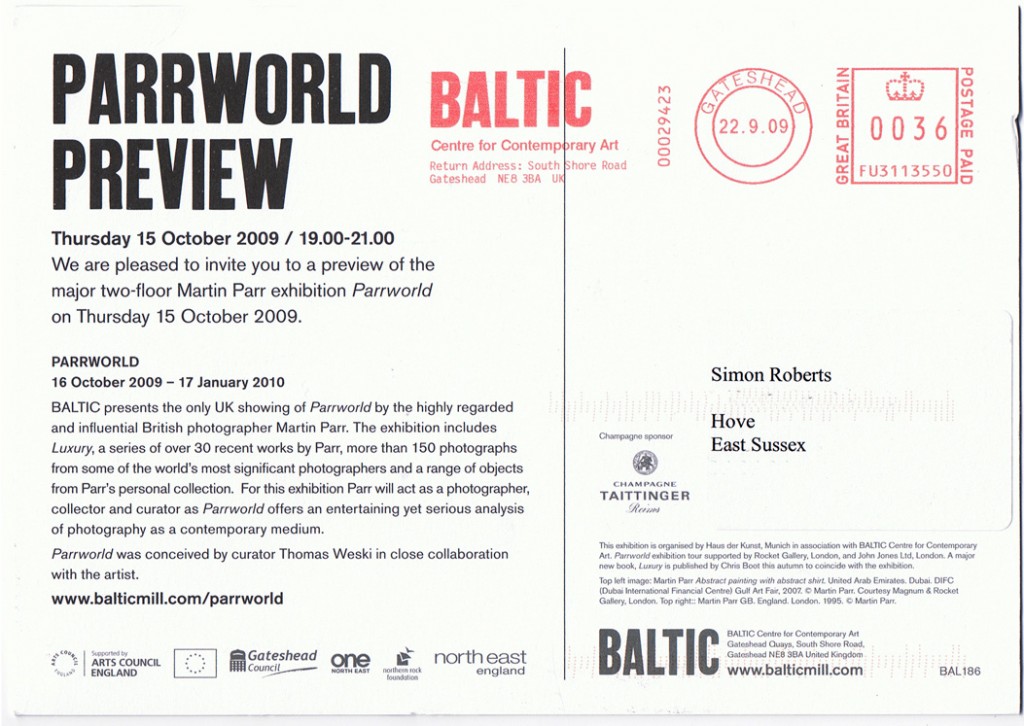
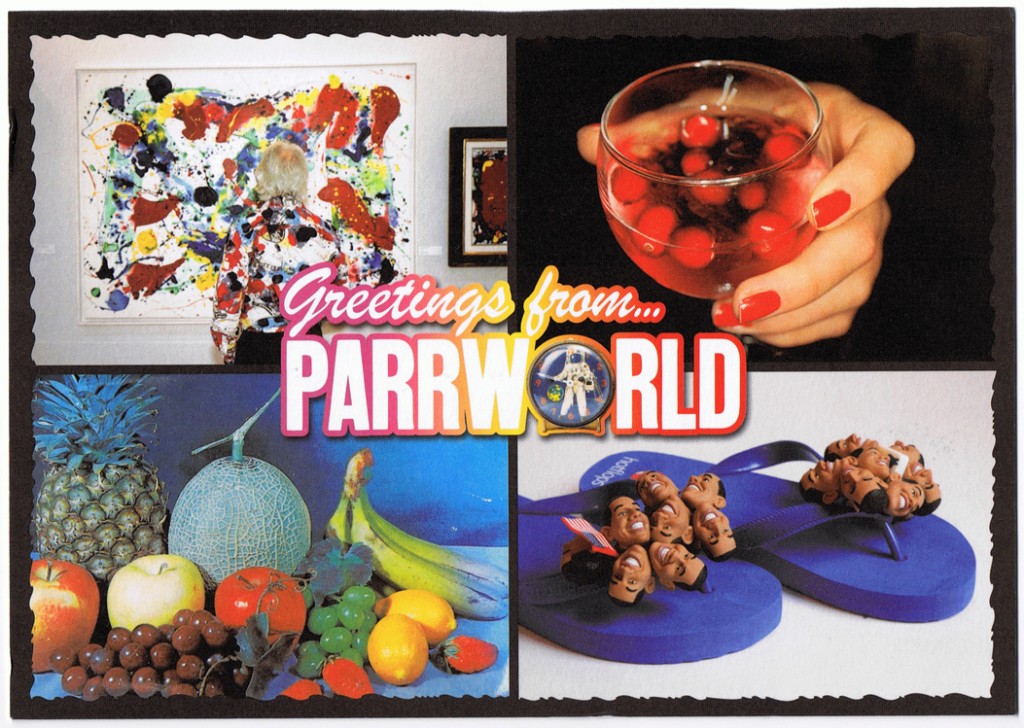








 Worker in Leeds City centre cafe, 1996 © Donovan Wylie/ Magnum Photos
Worker in Leeds City centre cafe, 1996 © Donovan Wylie/ Magnum Photos








 © John Hinde Ltd/ Chris Boot Ltd
© John Hinde Ltd/ Chris Boot Ltd





